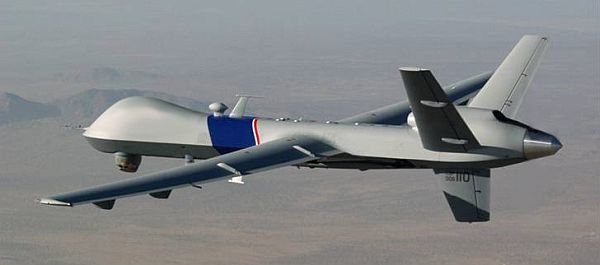Podcast: Play in new window | Download (Duration: 31:33 — 14.6MB)
This Episode:
A successful first sense and avoid flight, a Russian drone killer, UAS test site selection approaches, and a drone hunting proposal is going to the voters.
The News:
General Atomics tests UAV that can “sense and avoid” other aircraft
General Atomics Aeronautical Systems, Inc. has had a successful first test flight in California of a prototype Sense and Avoid (SAA) system, using a Predator B. Developing SAA is key to allowing UAS in the U.S. airspace. Radar, transponder, and traffic alert systems all worked together for the first time to detect other aircraft. This is not an optical system. Instead, it integrates three systems:
-
BAE Systems’ AD/DPX-7 Identification Friend-or-Foe (IFF) transponder with Automatic Dependent Surveillance – Broadcast (ADS-B) receiver
-
the General Atomics Due Regard Radar (DRR)
- Honeywell’s TPA-100 Traffic Collision Avoidance System or TCAS.
Russia upgrades Pantsir-S systems to create “UAV-killers”
With unmanned aircraft playing an increasing role in military operations, it was only a matter of time until we began to see UAV-specific countermeasures. The Russians are modifying their Pantsir-S (SA-22 Greyhound) gun-missile system to make it more effective at bringing down UAVs.
Freight-Drone Dream Has U.S. States Vying for Test Sites
Twenty-four States are vying to become UAS test sites where private researchers can study how unmanned aircraft can be integrated into the airspace. The FAA plans to announce the six sites before the end of 2013.
Colorado judge rules in favor of holding drone-hunting vote after legal fight
Remember Deer Trail, that Colorado town that is looking at a proposal to issue hunting permits for drones? A District Judge rejected a legal challenge and so now the town’s 370 voters will decide the matter April 1, 2014. The FAA maintains it’s position that shooting down aircraft is a criminal act.
An annual license would cost $25, and hunters would receive a $100 bounty for “identifiable parts of an unmanned aerial vehicle whose markings and configuration are consistent with those used on any similar craft known to be owned or operated by the United States federal government.”

